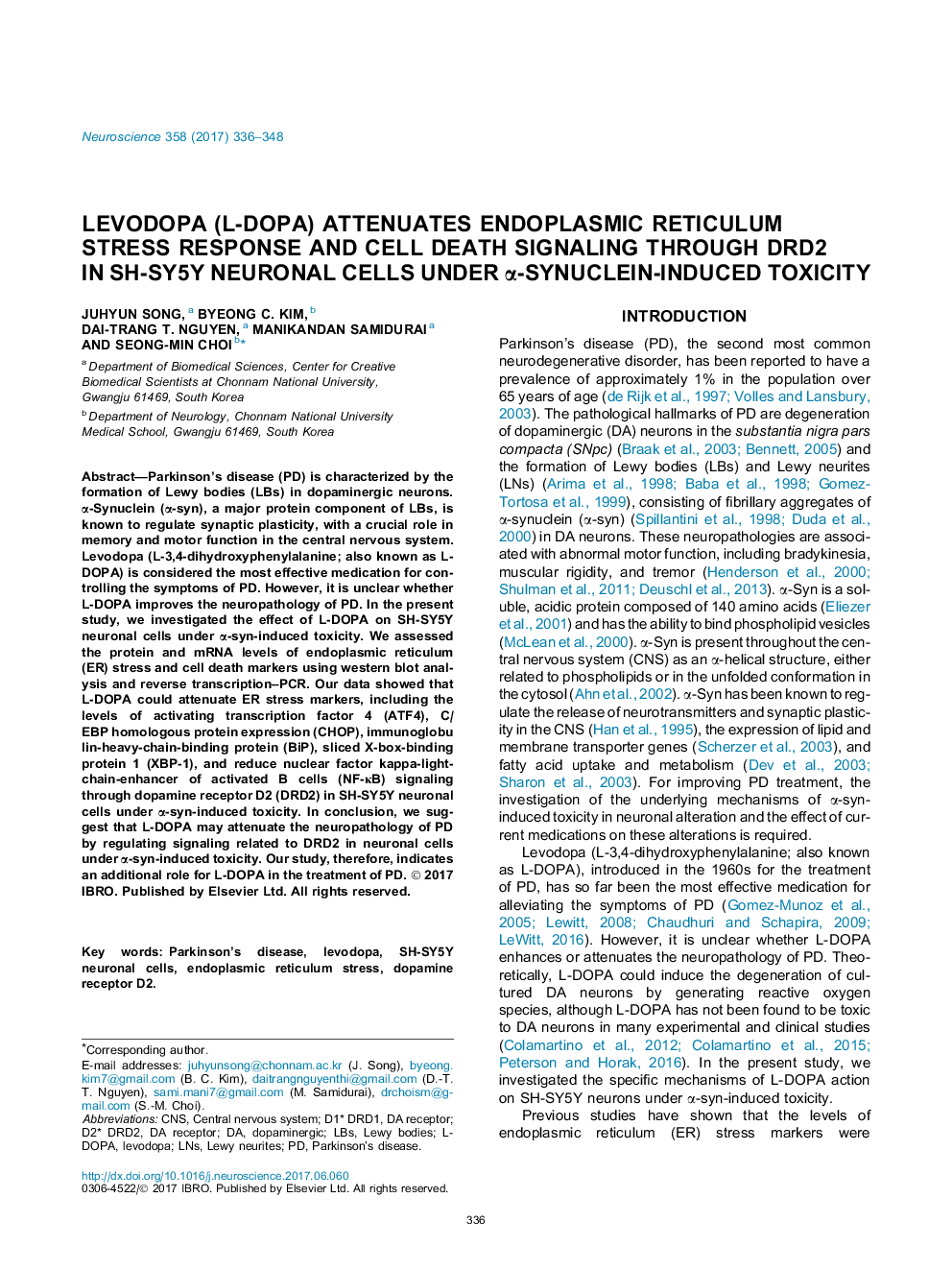| Article ID | Journal | Published Year | Pages | File Type |
|---|---|---|---|---|
| 5737638 | Neuroscience | 2017 | 13 Pages |
â¢Levodopa protects neuronal cells against α-syn-induced toxicity.â¢Levodopa improves the impaired synaptic signaling.â¢Levodopa reduces ER stress and cell death in neuronal cells through DRD2 receptor.
Parkinson's disease (PD) is characterized by the formation of Lewy bodies (LBs) in dopaminergic neurons. α-Synuclein (α-syn), a major protein component of LBs, is known to regulate synaptic plasticity, with a crucial role in memory and motor function in the central nervous system. Levodopa (L-3,4-dihydroxyphenylalanine; also known as L-DOPA) is considered the most effective medication for controlling the symptoms of PD. However, it is unclear whether L-DOPA improves the neuropathology of PD. In the present study, we investigated the effect of L-DOPA on SH-SY5Y neuronal cells under α-syn-induced toxicity. We assessed the protein and mRNA levels of endoplasmic reticulum (ER) stress and cell death markers using western blot analysis and reverse transcription-PCR. Our data showed that L-DOPA could attenuate ER stress markers, including the levels of activating transcription factor 4 (ATF4), C/EBP homologous protein expression (CHOP), immunoglobulin-heavy-chain-binding protein (BiP), sliced X-box-binding protein 1 (XBP-1), and reduce nuclear factor kappa-light-chain-enhancer of activated B cells (NF-κB) signaling through dopamine receptor D2 (DRD2) in SH-SY5Y neuronal cells under α-syn-induced toxicity. In conclusion, we suggest that L-DOPA may attenuate the neuropathology of PD by regulating signaling related to DRD2 in neuronal cells under α-syn-induced toxicity. Our study, therefore, indicates an additional role for L-DOPA in the treatment of PD.
